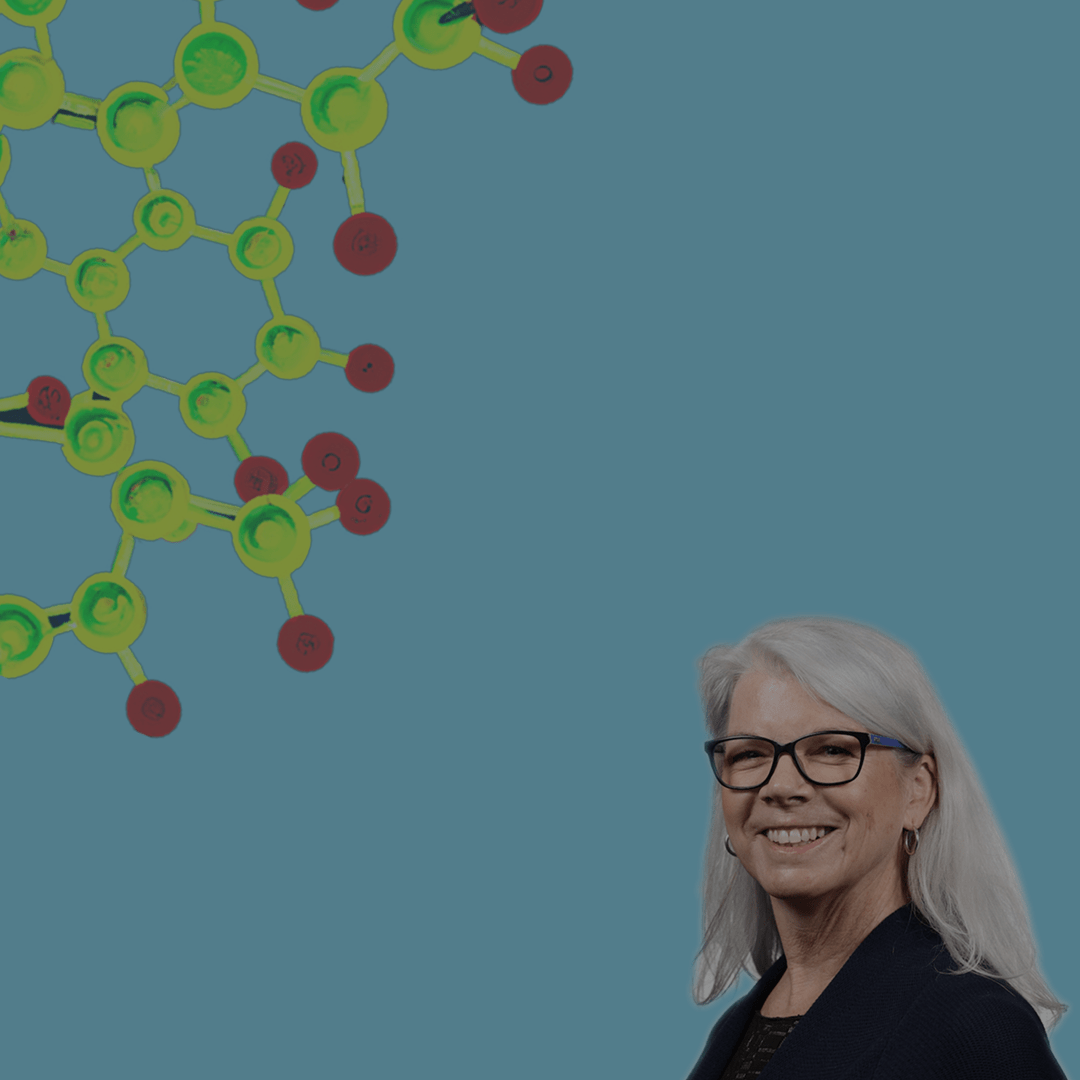

“Turning the carbon we have into the carbon we want”
Mary Maxon on working with BioMADE to Innovate for the Bioeconomy
About the Bioeconomy
The bioeconomy is the share of the economy based on products derived from biological sources, including renewable carbon from plants, and organic waste. The products of the bioeconomy are part of our everyday lives. Think of biodegradable clothing made from plant fibers, or cosmetics made from natural sources.
Biomanufacturing (the process of converting biological sources into useful products) is poised to revitalize U.S. manufacturing, create more resilient supply chains, reduce the nation’s dependence on fossil fuels, and bring us closer to a net-zero carbon economy. But the nation is severely lacking the investment in advanced manufacturing science and engineering required to scale the research, infrastructure, and workforce that will convert scientific discoveries from the laboratory to the marketplace.
Last June, BioMADE issued this special Project Call on advancing bioreactor design and development thanks to support from Schmidt Futures. Schmidt Futures is a philanthropic initiative of Eric and Wendy Schmidt that brings talented people together in networks to prove out their ideas and solve hard problems in science and society. The EBRC served as fiscal sponsor to facilitate this Project Call.
We asked Mary Maxon, Executive Director of the Schmidt Futures BioFutures program to share her thoughts on what this competition means for the bioeconomy, and why BioMADE was the right partner to advance the science of biomanufacturing for public benefit.
First, tell us about biomanufacturing in the United States. What’s the status quo and what’s the potential for growth?

Biomanufacturing in the United States contributes to about 5% of GDP, but that figure could be much higher. We have a lot of biomass in the United States – think of local forest debris or municipal solid waste. The U.S. has the capacity to produce a billion tons of sustainable biomass annually. This is plant-based carbon, not petroleum, which has dominated industrial manufacturing for decades, that isn’t valued right now. There is great potential to convert underutilized biomass to renewable carbon feedstocks in biomanufacturing processes to make energy, commodity chemicals, and vital consumer products. Consumers can already go to their supermarket and buy biologically derived laundry detergent, or protein foods from plants that look and taste like real meat. But we can do a whole lot more.
We ultimately want a vibrant, competitive, resilient, and circular U.S. bioeconomy, in which biological resources are transformed into food, feed, energy, and biomaterials in a sustainable process. Imagine bio-based construction materials which modulate temperature within homes and offices from Alabama to Alaska. We could see a new, greener era of industry, with good jobs in local biomanufacturing, with more resilient supply chains, better able to cope during pandemics and other crises.
But to turn the carbon we have into the carbon we want, we need to really focus our time and resources on the advanced manufacturing sciences and engineering required to scale up biomanufacturing.
What does this all mean for innovators in this field? Do they have to take their ideas abroad to scale them up?

It’s an exciting time for biotechnology. With the advent of what’s called CRISPR, the genome editing technology, it’s much easier and much faster to precisely edit DNA. And because of that new technologies and startups are springing up very quickly in the United States.
But there are very few facilities available to test and mature their technologies, and without a public database, the few ones that do exist are hard to find and very busy. Contrast this with Europe, where all the facilities are easily accessible via a public online database. So, for example, if you want to find a 5000 liter fermentation facility in Belgium, you probably could find that fairly easily. Because European facilities are easier to find and the waiting times are shorter, American startup companies are going to other countries for their technology maturation needs. Not only does the technology go overseas, but we also lose the “know-how” of maturing it at scale.
We need more technology maturation, more scale up facilities for biomanufacturing, to convert scientific discoveries into useful products of the bioeconomy. If we can do this, we can stimulate significant public and economic benefits, such as new job creation, a diverse workforce, distributed bioproduction based on regional biomass, resilient supply chains, and revitalized rural areas. The potential is nothing less than revitalizing U.S. manufacturing in a more sustainable way.
So tell us about the partnership with BioMADE? What’s special about their model?

BioMADE was launched in 2021 to secure America’s future through bioindustrial manufacturing innovation, education, and collaboration. BioMADE is the latest in the Manufacturing USA network, all 16 of which are public-private partnerships where the federal government co-invests with non-federal funding sources to advance a particular manufacturing technology area, in this case bioindustrial manufacturing. At Schmidt Futures, we asked: “What’s special about this BioMADE ecosystem? Why did more than 200 organizations join in a very short period of time, including leading companies, top research universities, and nonprofits?” We found that there are several reasons.
First, it has a site Minneapolis-St. Paul, MN, in our nation’s heartland. This is important because a thriving future bioeconomy depends on distributing production evenly across the country, not just in the known coastal hubs of biotechnology such as Boston and San Francisco.
Second, members co-invest in projects. This results in opportunities to do new things they might not be able to do in a university setting, or which might not be approved by corporate shareholders. This model is a real attraction to those who care about biomanufacturing innovation.
Third, when members work together, and create new tools or technologies, they share them throughout the ecosystem. The BioMADE model recognizes the value of what each company brings to the table by ensuring that their original ideas and inventions are protected. But anything new that members create together is shared with other BioMADE members through an innovative, albeit complex, inclusive model that fosters both cooperative innovation to benefit the entire ecosystem while balancing individual members’ entrepreneurial spirit.
This is why we partnered with BioMADE to launch a special Project Call for bioreactor innovation.
This month, BioMADE announced the projects supported through the special Bioreactor Innovation Project Call. Tell us about the importance of their work, but first, let’s cover some of the basics. What is a bioreactor?

A bioreactor, also known as a fermenter, is basically a fancier version of the apparatus used to brew beer. Today’s bioreactors are used in industrial processes to convert raw materials into useful byproducts, such as the conversion of corn into ethanol, a versatile industrial chemical. However, they have not advanced significantly beyond that original function of brewing beer. Creating novel types of bio-based products, products from renewable carbon sources such as plants, on a commercial scale requires a new generation of bioreactors.
Let me explain why in a little more detail. Today, bioreactors are largely made of steel. They’re expensive and large, and they’re made from steel because it can withstand the high temperatures and pressures of steam sterilization to combat contamination. But what if we didn’t need to use steam to sterilize? What if we could use UV light to sterilize? Well, if we did that maybe we could 3D print bioreactors, maybe we could print bioreactors right next to where the biomass is generated. And in that case, we could take the fermentation facility to the biomass instead of bringing the biomass to the fermentation facilities. And the reason that’s important is because it’s really hard to move biomass. If you’re thinking about fallen trees in a forest, that’s big, bulky stuff, which is hard to shift. So if we could bring the fermentation to the biomass that would go a long way in advancing bioreactor innovation toward a local, regional, distributed network of fermentation facilities to meet the needs of rural communities. They could replace the norm of having these big bio-refineries that make ethanol where everybody’s got to drive the corn in very specific truckloads at a very specific time to get it into one big bioreactor. If we solve the bioreactor innovation challenge, we could in theory make any product at any scale on demand.
And that’s why the five new projects which resulted from the Special Project Call with BioMADE are so important. There are academic teams, there are industry teams, working together, and it’s very exciting.
BioMADE is working to create a national network of bioindustrial manufacturing pilot innovation facilities around the country. It’s even possible that these new facilities could be the place where the first innovations of the Project Call are brought to scale. I see BioMADE not just as a partner for this competition, but as a partner for a future home of national pilot-scale infrastructure to bring ideas from the laboratory to the market. Our support as part of this network can leverage so much more than we could as a single philanthropic initiative.
